What's New in the AQ? Part II
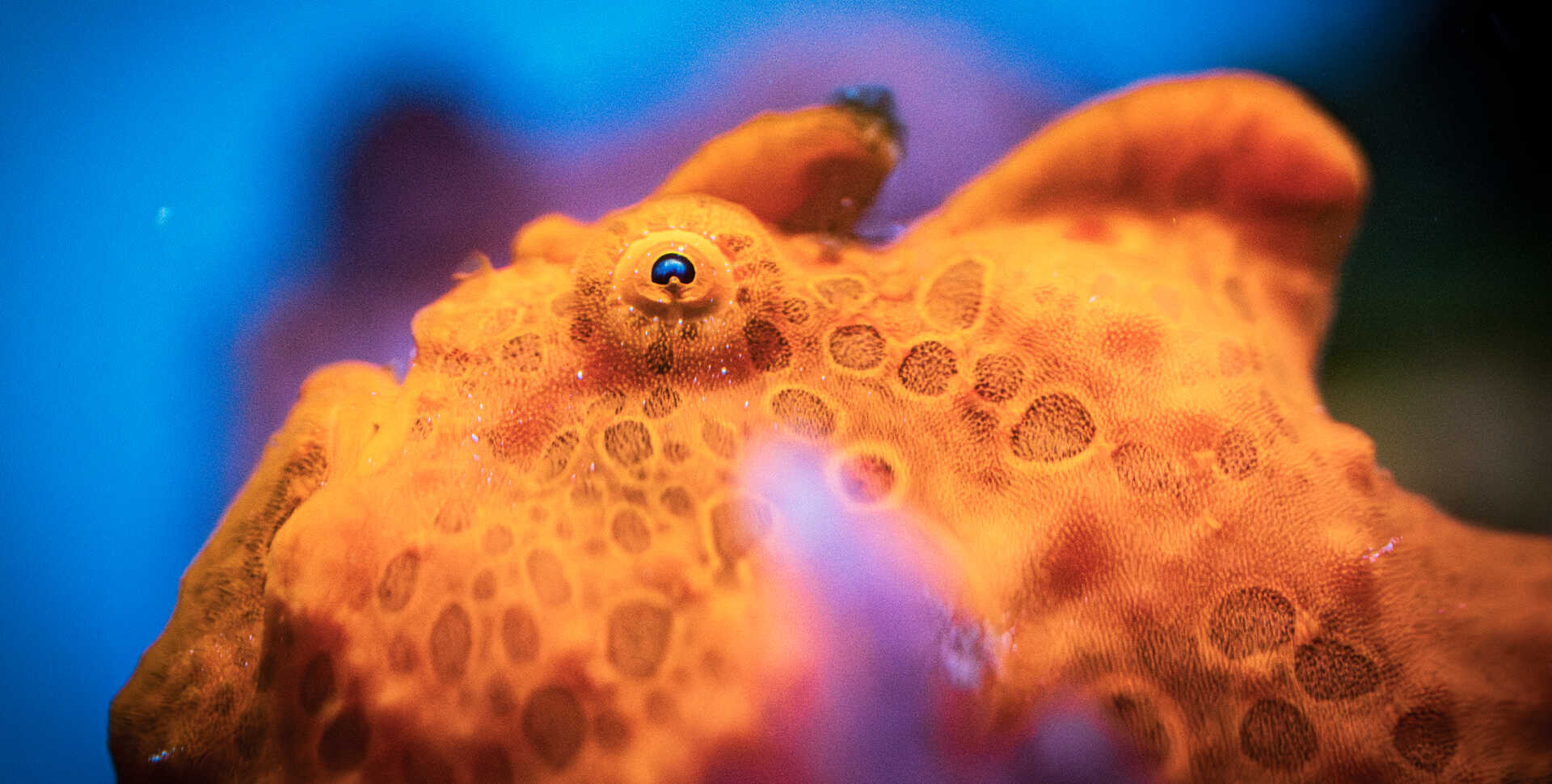
The world: Chaotic. The Academy: Hypnotic.
Soothe your soul at Steinhart Aquarium this spring and say hello to six fascinating newcomers that represent the dazzling diversity of the animal kingdom, from demure seadragons to moonwalking manakins. We’ll start our safari Down Under, make a North Pacific pit stop, and conclude high in the Amazon canopy.
Read on, bliss out, and plan your visit today.
With a spindly snout, wing-like appendages, and an impressive tail, it’s easy to see how the weedy seadragon got its name—although this delicate creature is definitely more Puff than Smaug.

Size: Up to 12–18 in.
Distribution: Temperate coastal waters of Southern Australia
Habitat: Seagrass beds, seaweed forests, rocky reefs
Diet: Mysid shrimp and other small crustaceans, plankton, and larval fish
At the Academy: Find them in Water Planet (map)
The fairy-tale beauty of these fragile fish serves an important purpose: Survival. Chic polka dots, striking “leaflets,” and an ombré palette help seadragons blend seamlessly into southern Australia’s seagrass beds and seaweed forests. Their bumbling swimming style completes this masterclass in camouflage: Drifting along with the current, they match the swaying movements of surrounding plant life.
Who knew going with the flow could look so good?

“Unofficially, we call him the ‘angry Cheeto,’” says Steinhart Aquarium Biologist Steven Yong as he spears a shrimp onto a feeding stick. Officially, I will never call him anything else.
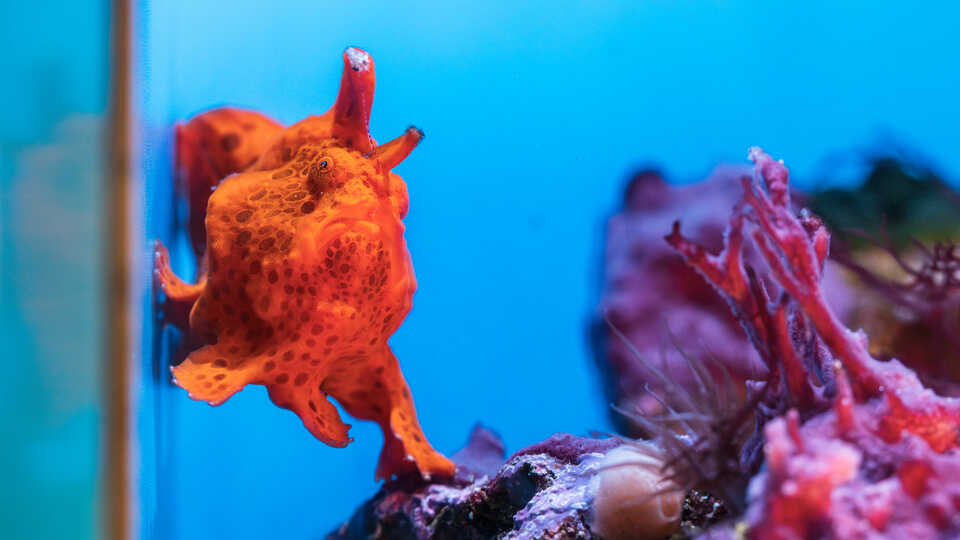
Size: Up to 8–12 in.
Distribution: Red Sea and eastern Africa to Hawai’i, southern Japan, and Australia
Habitat: Tropical and subtropical reefs, often near sponges
Diet: Fish, shrimp
At the Academy: Find it in Hidden Reef (map)
Bulbous, bulging-eyed, and impossibly orange, our painted frogfish wears a permanent frown that gives the impression of unrelenting grumpiness. This morning, it was deserved: His shrimp was not being served properly. Yong fluttered the shrimp near the frogfish’s built-in lure like a pro, but the frogfish wasn’t taking the bait. It was time to change tack. Yong ditched the feeding stick for a pair of six-inch tweezers and then—CHOMP! The shrimp disappeared into the frogfish’s cavernous mouth.
Angry Cheeto just needed the right utensil.
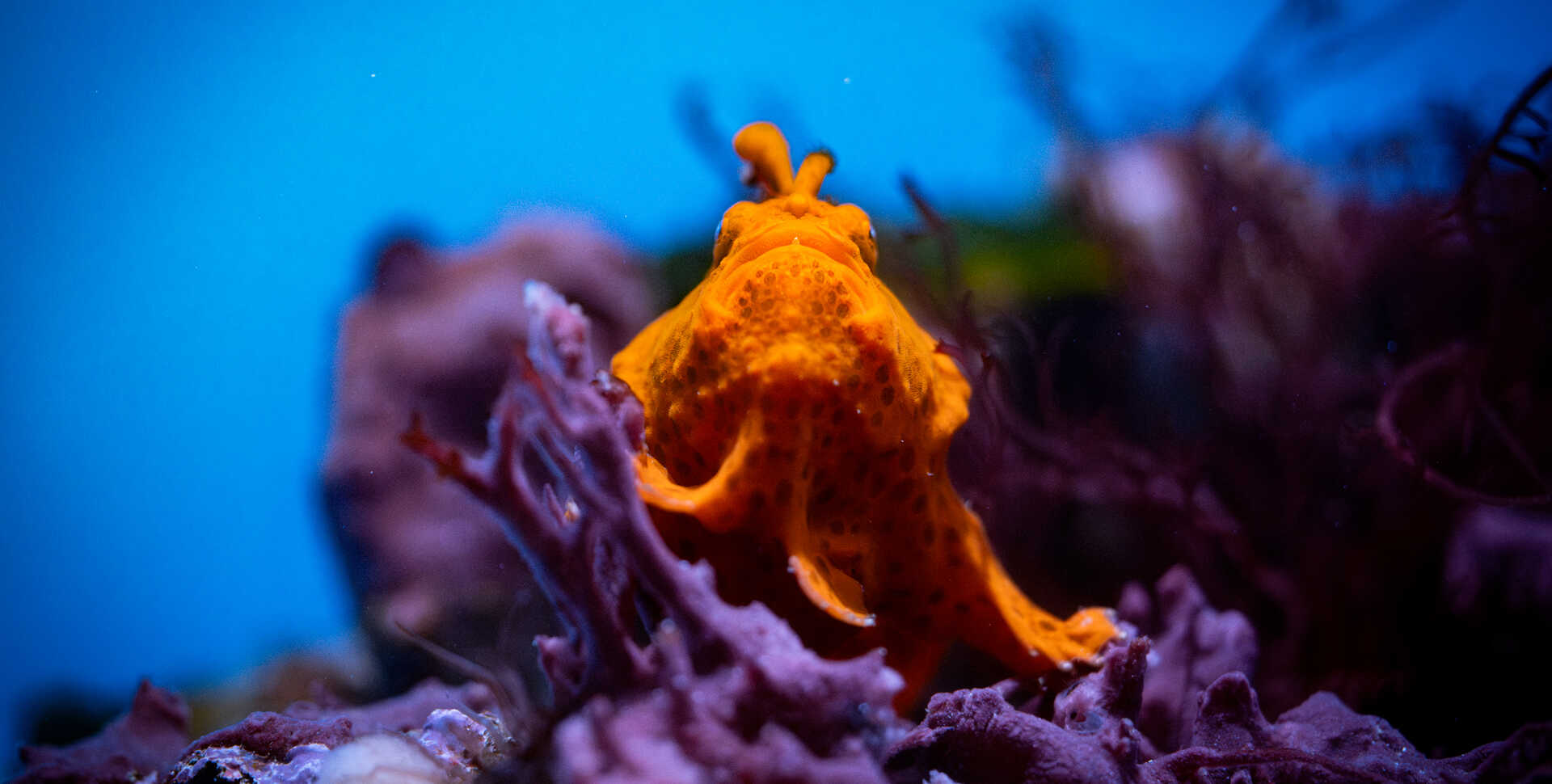
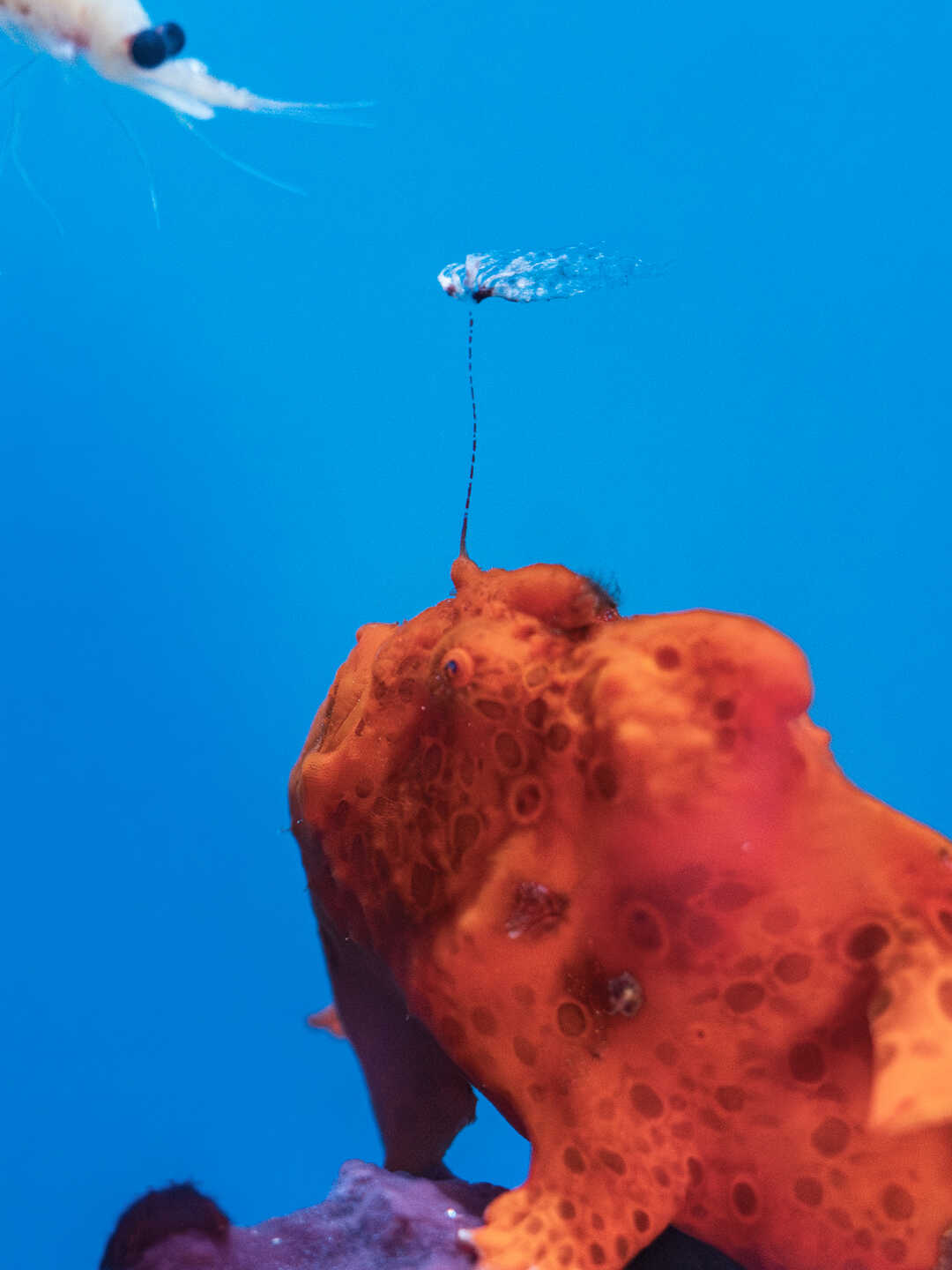
Painted frogfish use their lure—actually a modified dorsal spine—to attract prey.
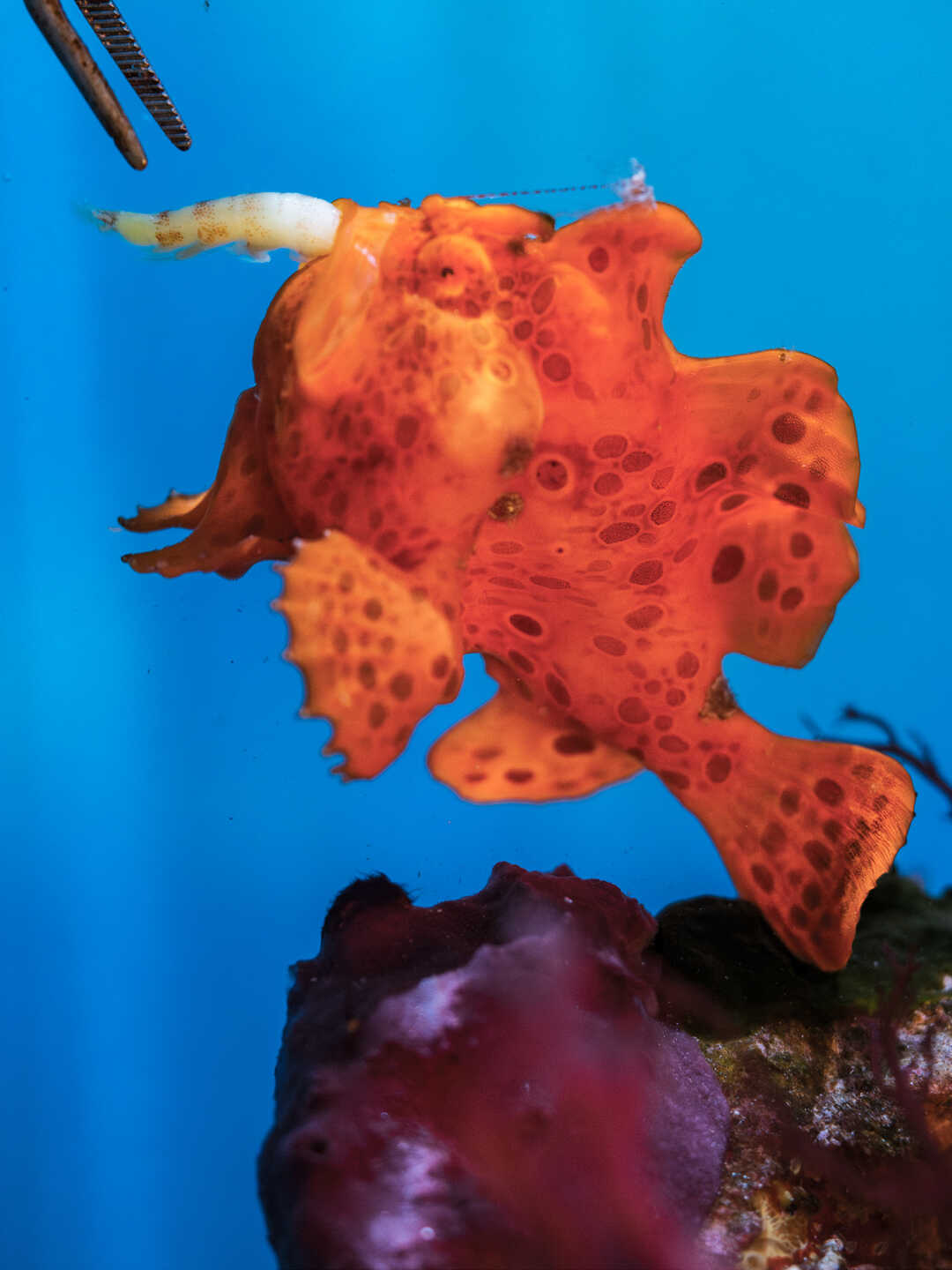
Chomp! Frogfish jaws snap shut in a flash. If it fits in its mouth, it’s on the menu.
I am nudibranch, hear me roar! The lion’s mane nudibranch looks like it’s from light years away, but this predator is local. Plankton of the Pacific coast, consider yourselves warned.
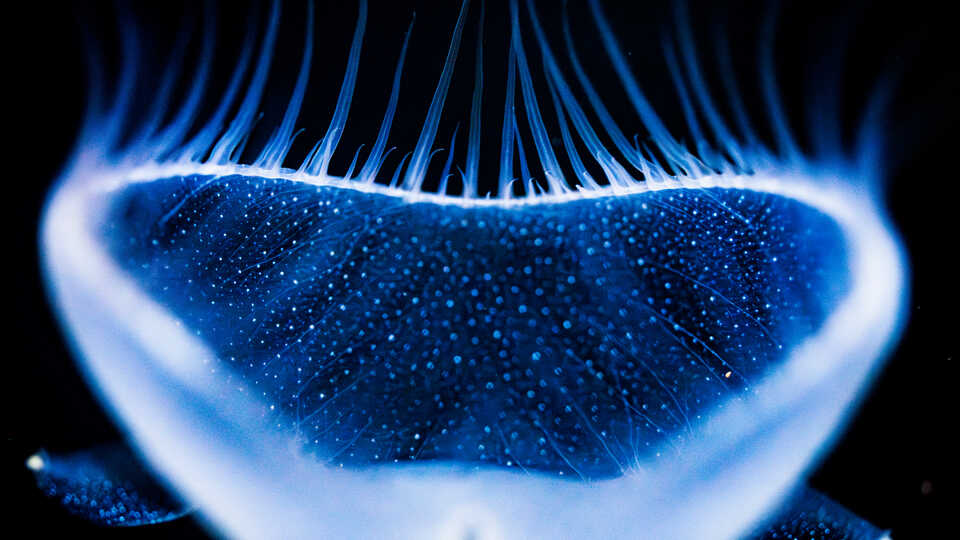
Size: Up to 4 in. long; oral hood up to 2 in. wide
Range: Pacific coast from Alaska to Baja California
Habitat: Kelp forests
Diet: Small crustaceans, mollusks, jellyfish
At the Academy: Find them in Water Planet (map)
Mostly stationary, this unusual sea slug uses its enormous oral hood to gulp passing prey Venus flytrap-style, its tentacle-like cirri sealing the meal within its maw. The hood then closes tighter, pushing the doomed prey into the sea slug’s mouth.
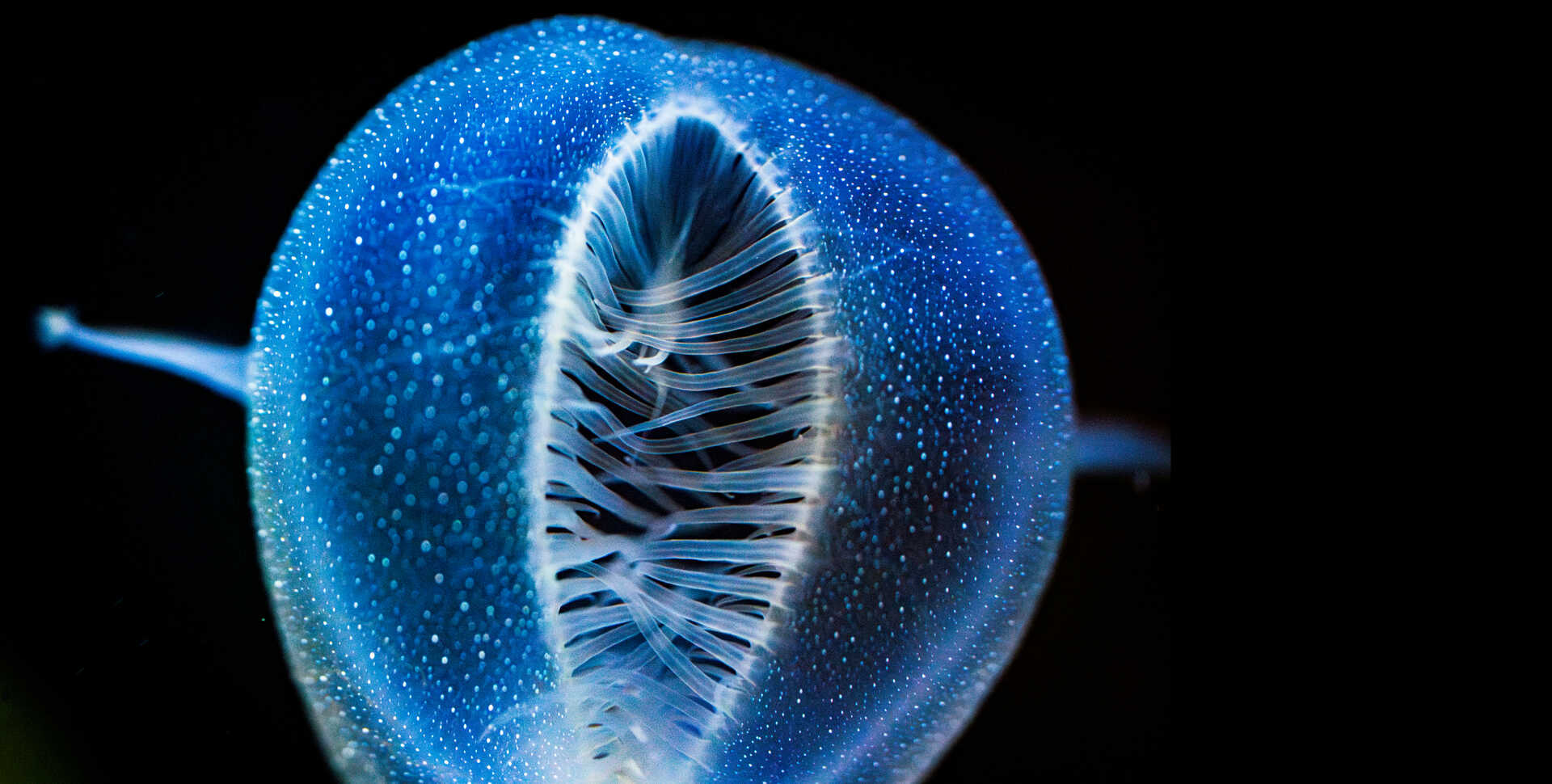

Leaf-like growths called cerata help these nudibranchs breathe and blend into their surroundings.
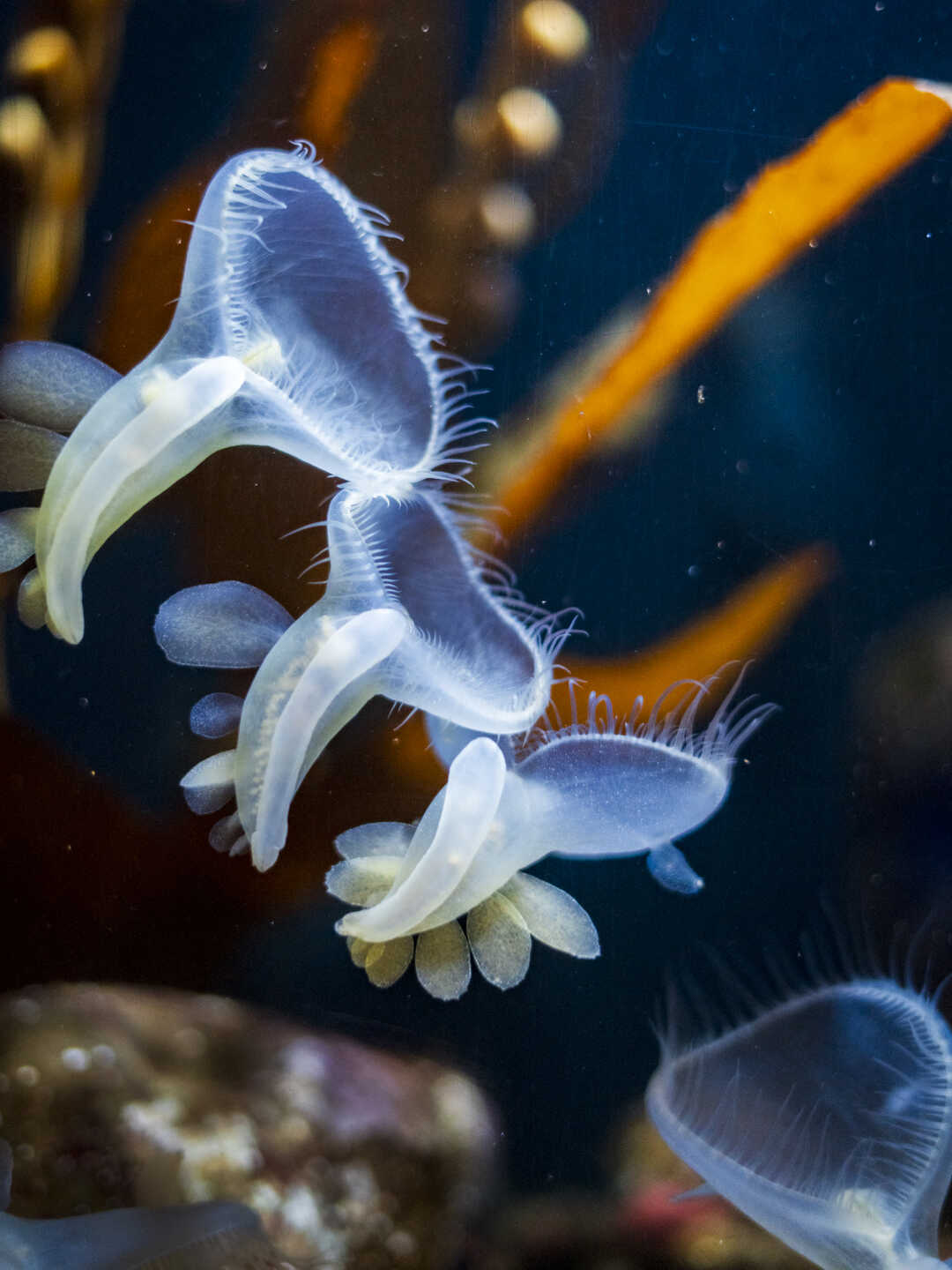
If you're lucky, you might catch one of these nudis on the move in its habitat.
Towering colonies (or are they prides?) of lion’s mane nudis can be found clinging to kelp blades, their hoods opening and closing like a spooky, silent chorus.
Our “cupid cohort” of sunflower stars just turned one! Born (a.k.a. spawned) on Valentine’s Day 2024 in a lab at Birch Aquarium in La Jolla, the tiny embryos were transported to Steinhart Aquarium, painstakingly parented by our biologists for months, and placed on exhibit in December. It’s a major milestone for these critically endangered invertebrates.

Size: Up to 3 ft.; 16–24 arms
Distribution: Pacific coast from Alaska to Baja California
Habitat: Kelp forests
Diet: Mollusks, crustaceans, fish, other echinoderms
At the Academy: Find them in Water Planet (map)
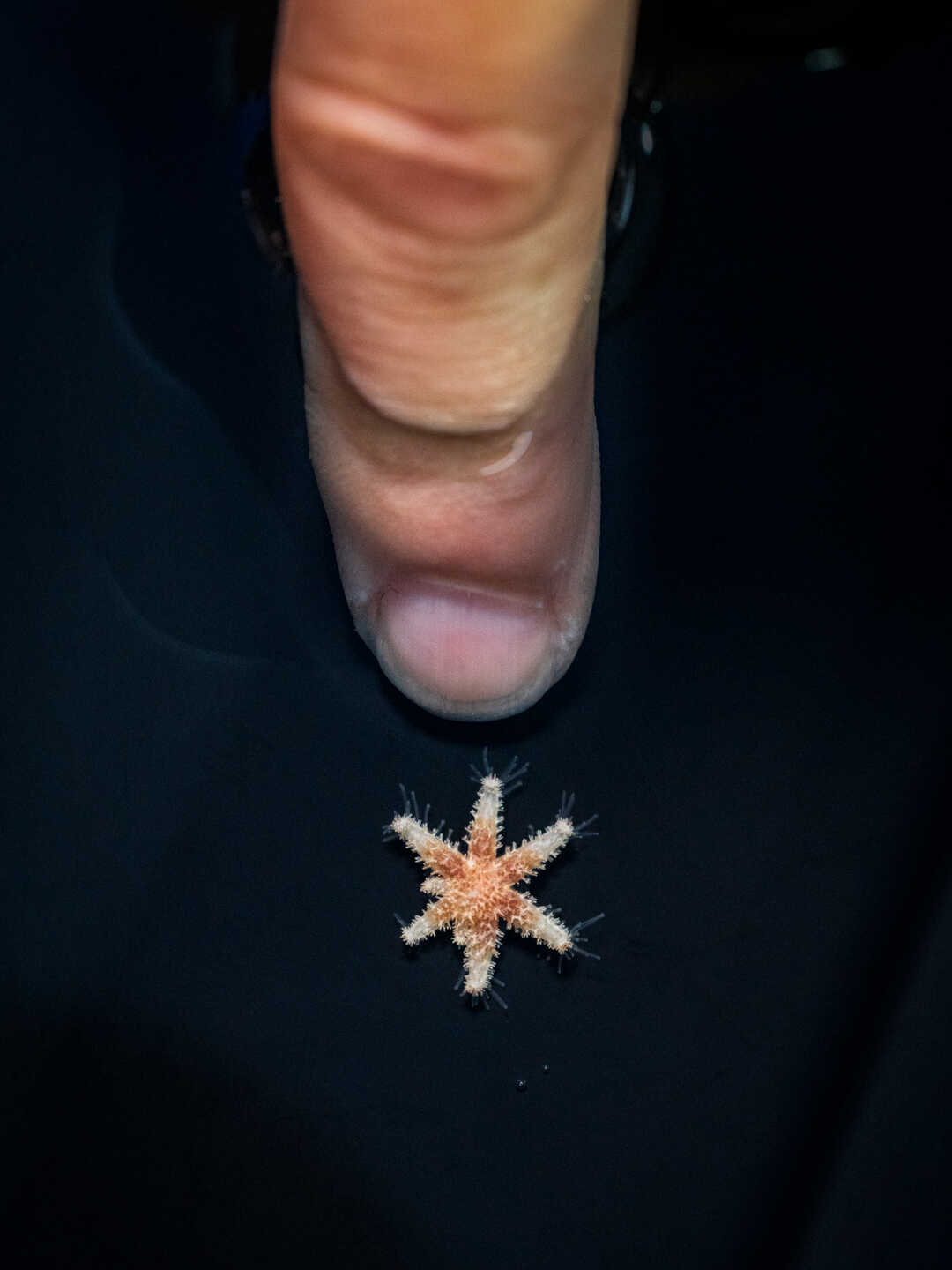
At five months old, our sunflower stars were about the size of a fingernail and starting to grow more arms.
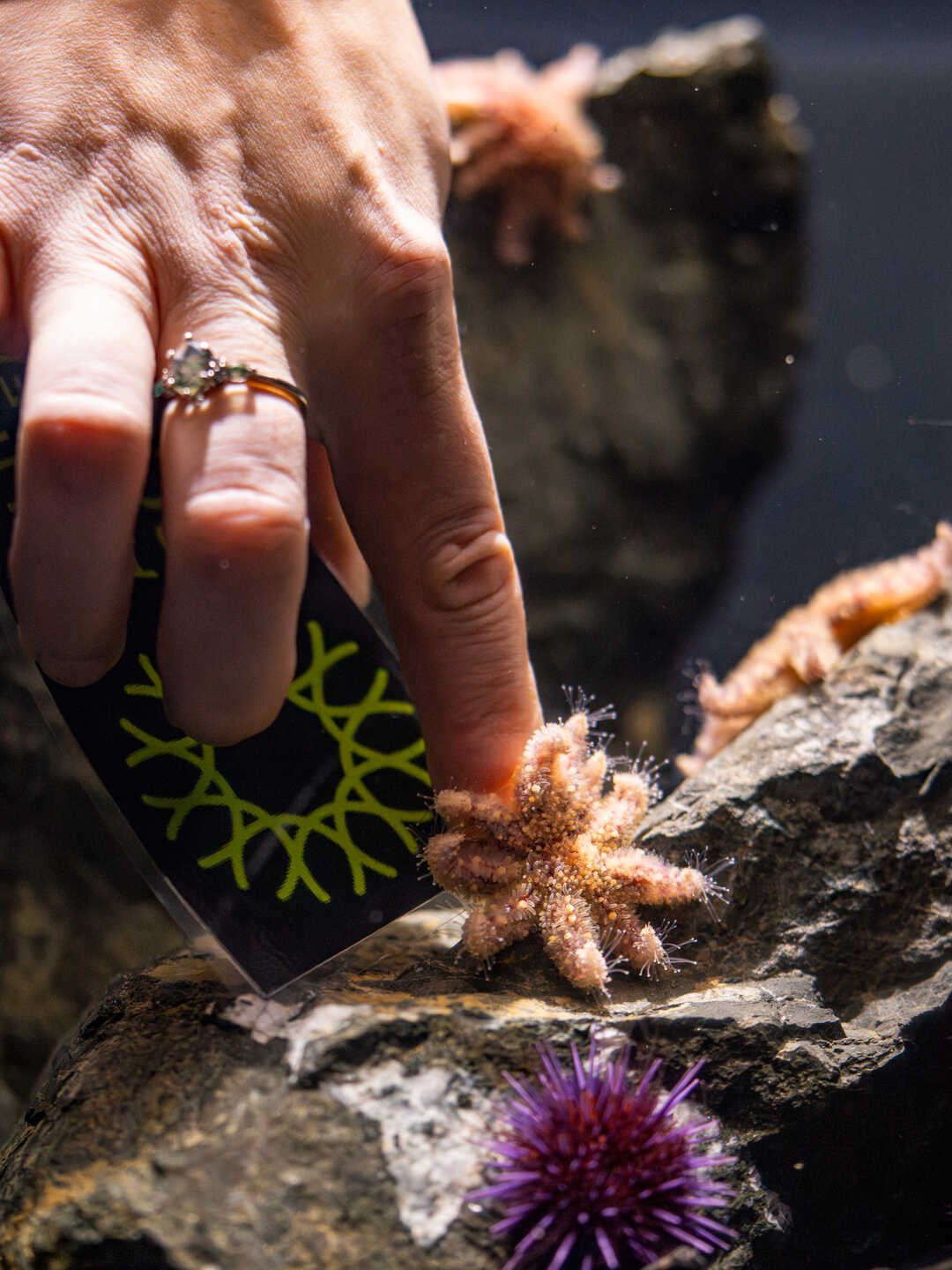
Moving day! Now half-dollar size, our sunflower stars went on exhibit in December.
Over the past year, our precious Pycnopodia have sprouted several new arms, bulked up to half-dollar size, and kindled hope for a species decimated by sea star wasting disease.
With any luck, successful spawning events will continue, and future sunflower stars will have an easier time finding a valentine.
The current bird lineup in Osher Rainforest is six years in the making, says Brenda Melton, director of animal care and wellbeing. “Calculating biomass, managing species interactions, coordinating diets—it’s an intricate dance.”
Fitting, because we now have dancing birds.
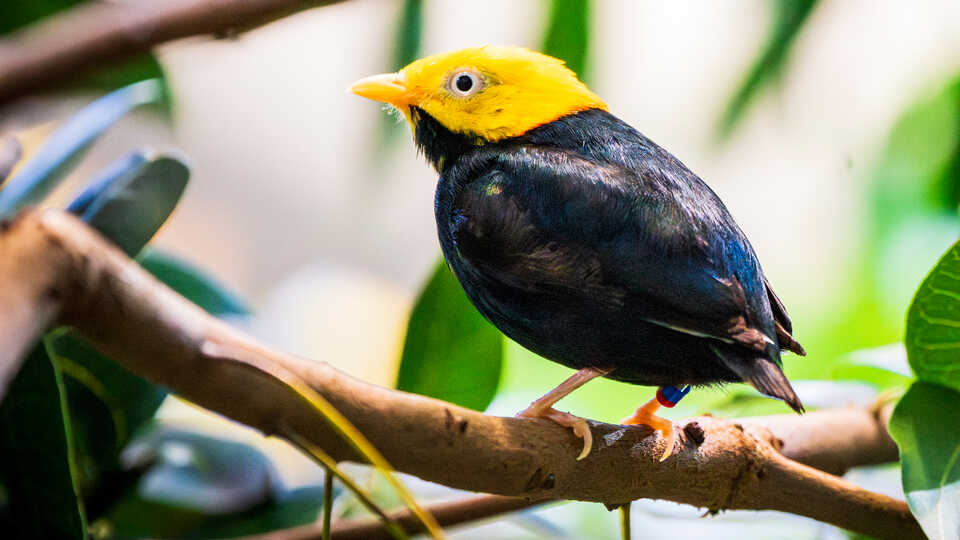
Size: Up to 4 in.
Distribution: Tropical Central and South America from Panama to northern Peru
Habitat: Tropical forests, woodlands, and plantations
Diet: Fruit (especially papaya), insects
At the Academy: Find them in Osher Rainforest (map)
Since their arrival in October, our male golden-headed manakins have transformed the rainforest into a cabaret. To them, every branch is a stage—and I recently had front-row seats. Sparks Perkins, Steinhart Aquarium biologist and bird-whisperer, describes it best:
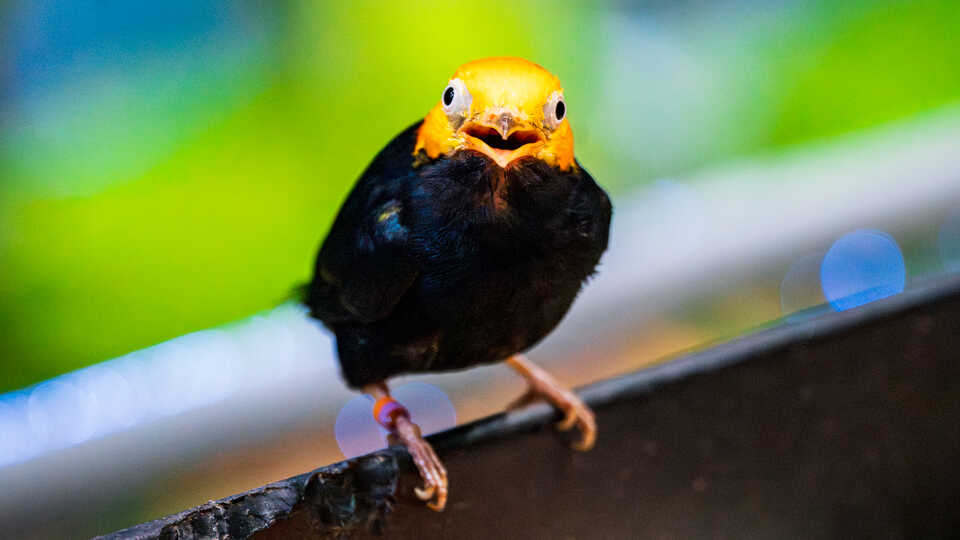
A male golden-headed manakin waits for a turn at the feeding station.
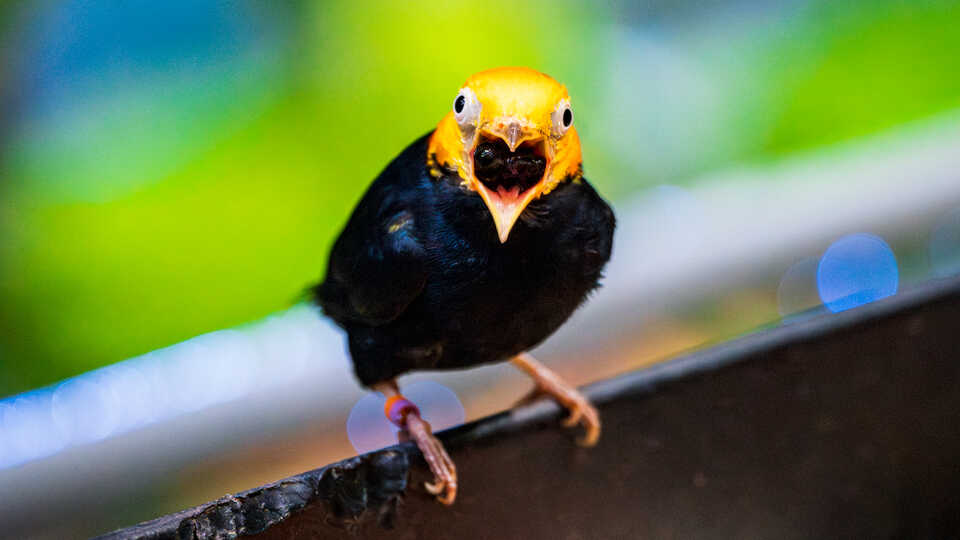
He believes he’s waited long enough.

The Academy is one of only two places in the U.S. with golden-headed manakins on exhibit.

Refueling after an exhausting moonwalk session.
Whether you’re on the market or not, you should allow yourself to be wooed. For best results, bat your eyelashes above the macaw perch on level 2, or smolder by the feeding station on level 3.
The manakins have the moves, but the euphonias have the music. (It’s even in their name: “Euphonia” roughly translates to “good sound” in Greek.)
Natural-born DJs, euphonia have a knack for mimicking other birds’ songs, splicing them together, and remixing them into a complex tropical mash-up. Enter Osher Rainforest and that multi-species symphony you hear may be coming from a one-euphonia-band.

Size: Up to 4.5 in.
Distribution: Tropical South America from Venezuela to Argentina
Habitat: Tropical forests, woodlands, and plantations
Diet: Fruit, insects
At the Academy: Find them in Osher Rainforest (map)
As the rainforest’s newest residents, our euphonias and manakins are being closely monitored by Steinhart biologists to ensure they’re happy and healthy. One sign that a bird is thriving is when it builds a nest. Sure enough, a euphonia nest was spotted in the canopy within a couple months of their arrival.
Apparently, there’s no place like dome.
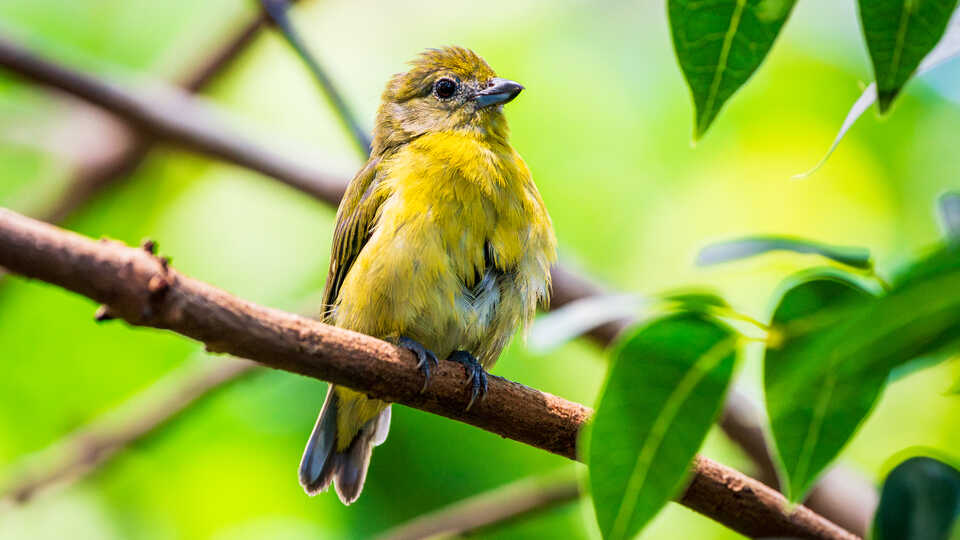
Female violaceous euphonia lack the deep purple coloration of males of the species.
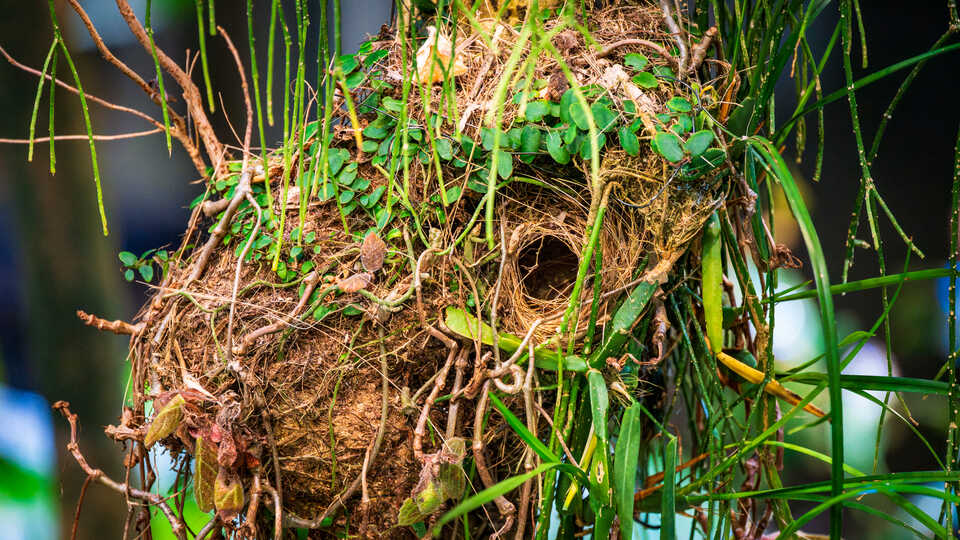
The signature cavity nest of the violaceous euphonia, built in Osher Rainforest just a couple months after their arrival.


